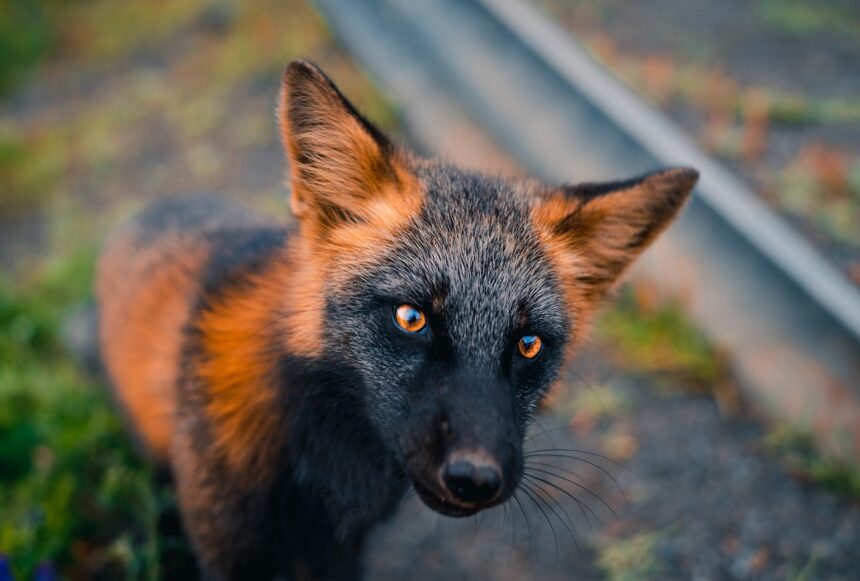Introduction to Cross Fox
Cross fox are one of nature’s intriguing wonders. With their striking appearance and elusive behavior, these beautiful creatures spark curiosity among wildlife enthusiasts and casual observers alike. Found primarily in North America, the cross fox is a unique color variation of the red fox. Their distinctive markings make them stand out against various backdrops, but spotting one in the wild can be quite a challenge.
Whether you’re an avid hiker or simply someone who enjoys exploring nature, understanding how to identify a cross fox can enhance your outdoor experiences. This guide will delve into their characteristics, behaviors, and habitats while providing tips for recognizing them on your next adventure. Let’s embark on this fascinating journey into the world of cross foxes!
Characteristics and Physical Appearance of a Cross Fox
The Cross Fox is a striking variation of the red fox, easily recognizable by its unique coat. Its fur typically showcases a mix of reddish-brown and black shades, creating an eye-catching tapestry.
One of the most distinctive features is the dark cross pattern on its back. This gives it a somewhat mystical appearance, setting it apart from other foxes in its family.
Cross Foxes possess slender bodies with long legs, allowing them to navigate various terrains effortlessly. Their bushy tails are not just for balance; they also serve as warm blankets during cold nights.
Their sharp ears stand tall and alert, perfect for detecting sounds in their environment. With keen eyesight and excellent hearing, these creatures embody agility and grace in their movements while hunting or exploring their surroundings.
Habitat and Geographic Distribution
Cross foxes are a fascinating subspecies of the red fox, widely dispersed across various habitats. These clever creatures thrive in diverse environments, from forests and grasslands to tundras and mountains.
In North America, they are primarily found in Canada and the northern United States. Their adaptability allows them to occupy both rural and suburban areas. This versatility is vital for their survival as it helps them evade predators while seeking food.
Across Europe and Asia, cross foxes can also be spotted in similar terrains. They prefer regions with ample cover for hunting opportunities but will venture into open spaces when necessary.
Their geographic distribution reflects their resourcefulness. Cross foxes have successfully carved out niches within different ecosystems, showcasing their remarkable ability to adapt to changing landscapes.
Diet and Hunting Behavior
Cross foxes are opportunistic feeders, which means they adapt their diet based on available resources. They primarily hunt small mammals like rodents and rabbits. However, they won’t shy away from birds or even insects when the need arises.
Their keen sense of hearing plays a crucial role in locating prey hidden beneath snow or foliage. Cross foxes often employ stealthy stalking techniques, moving silently before pouncing with agility.
Scavenging is also common among these clever canids. They will take advantage of carrion left behind by larger predators. This adaptability allows them to thrive in various environments.
Typically solitary hunters, cross foxes may sometimes work together during the breeding season or when raising kits. This collaborative hunting can increase their chances of success and ensure food availability for the young ones as they grow.
Mating and Reproduction
Mating season for cross foxes typically occurs in late winter to early spring. During this period, males become quite vocal, using a variety of calls to attract females and establish territory. These calls can resonate through the quiet woods at night.
After successful mating, the female prepares a den for her pups. This is usually located in secluded areas like rocky outcrops or abandoned burrows. She will give birth to a litter ranging from four to six kits after about 53 days of gestation.
Both parents play roles in nurturing the young. The male often helps by bringing food back to the den while the female cares for their offspring until they are ready to venture outside around eight weeks old.
As summer approaches, these playful kits begin exploring their surroundings under careful watch from their parents, learning essential survival skills that will serve them well as they mature into independent adults.
Conservation Status and Threats to Cross Foxes
Cross foxes face several threats that impact their populations. Habitat loss is a significant concern, primarily due to urban development and agriculture encroaching on their natural environments. This fragmentation disrupts their territories and limits access to prey.
Additionally, hunting remains a threat in some areas where cross foxes are still hunted for their fur. Though less common than other species of fox, they can fall victim to traps set for larger game.
Climate change poses further risks by altering the ecosystems these animals depend on. Changes in temperature and precipitation patterns can affect food availability and breeding success.
Conservation efforts are crucial for maintaining stable populations of cross foxes. Protecting habitats through wildlife reserves and promoting awareness about their ecological role may help safeguard this unique subspecies from further decline.
Tips for Identifying a Cross Fox in the Wild
Spotting a cross fox in the wild can be an exhilarating experience. To enhance your chances, pay attention to their unique coloration. Look for a rich reddish-brown coat with distinct black markings across their shoulders and back.
Timing is key. Early morning or late evening are prime times when they’re most active.
Listen carefully; cross foxes often communicate with high-pitched barks or howls, especially during mating season.
Keep an eye on their movements. They tend to have a playful demeanor, pouncing while hunting small prey like rodents.
Look for signs of their presence such as tracks or scat near dens, which will offer clues about where to focus your search. Being patient and observant can lead you right into the fascinating world of these elusive creatures.
Other interesting facts about Cross Foxes
Cross foxes are a fascinating variation of the red fox, known for their unique color patterns. Their fur features striking cross-like markings across their backs, giving them an unmistakable appearance.
These clever animals have adapted to various environments, from dense forests to open fields. They thrive in both rural and suburban areas, often scavenging near human settlements.
Interestingly, cross foxes are more social than many other canid species. They communicate with each other through a range of vocalizations, including barks and screams that echo through the night.
Their keen intellect also plays a significant role in hunting strategies. Cross foxes often work alone but can occasionally cooperate when chasing prey or defending territory.
These captivating creatures possess exceptional hearing and smell. This allows them to detect potential threats as well as locate food buried beneath snow or foliage with impressive accuracy.
Conclusion
Cross foxes are fascinating creatures that offer a unique glimpse into the wild. Their striking appearance and elusive nature make them a captivating subject for wildlife enthusiasts. Understanding their characteristics, habitat, diet, and reproductive behaviors provides valuable insight into how they thrive in various environments.
As you venture outdoors, keep an eye out for these beautiful foxes. With their distinctive coloration and adaptable lifestyles, cross foxes can be recognized by both seasoned trackers and casual observers alike. Learning to identify them not only enhances your outdoor experiences but also contributes to conservation efforts aimed at protecting these remarkable animals.
The more we know about cross foxes—how they live, hunt, and reproduce—the better equipped we’ll be to appreciate their role in the ecosystem. They are just one of many species that highlight the importance of biodiversity on our planet.
So next time you’re exploring the wilderness or simply enjoying nature’s beauty, remember to look closely—you might just spot a cross fox darting through the underbrush or pausing gracefully in its natural habitat. Each sighting is a reminder of nature’s wonders waiting to be discovered.





